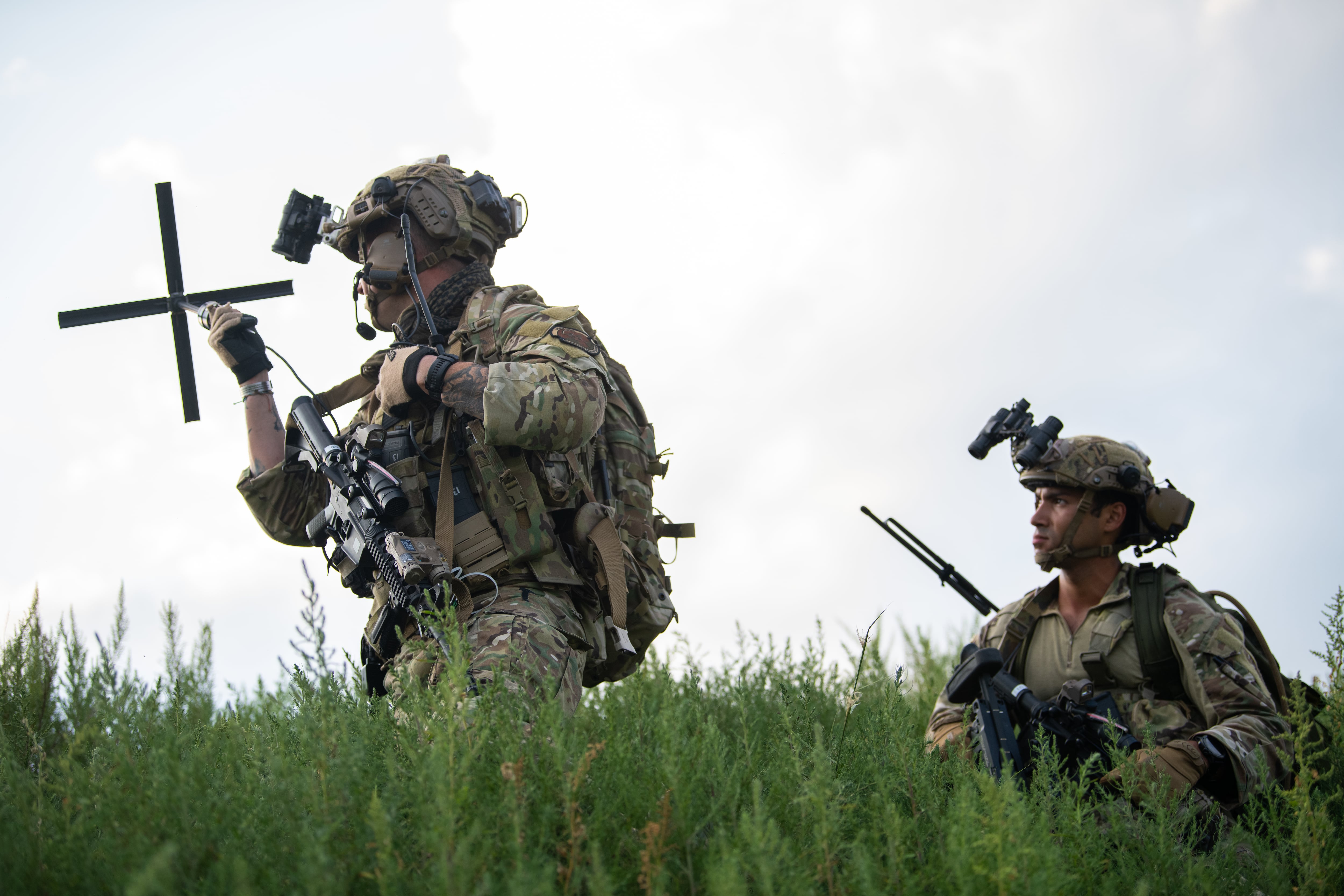WASHINGTON — The U.S. Navy will deploy a carrier strike group with advanced networking capabilities next year, in furtherance of the Pentagon’s vision for Joint All-Domain Command and Control.
The anticipated upgrades are the result of Project Overmatch, the Navy’s secretive contribution to JADC2 and its promise of seamless information sharing and expedited threat response across land, air, sea, space and cyber. Pentagon leaders say such speed and agility is critical to overcoming advanced adversaries, namely China and Russia.
“You probably don’t hear a lot of details about what’s going on behind the curtain,” Undersecretary of the Navy Erik Raven said Sept. 7 at the annual Defense News Conference. “But really what this has to do with is matching up Navy innovation and Navy technologies.”
“What can we bring to the joint force?” he said. “This really matches up very well with the initiatives across the department on JADC2.”
The Army, Air Force and Navy have their own approaches and development cycles for JADC2, which leaders pitch as an ecosystem, not any one specific technology. Project Overmatch is the least publicly well-known of the bunch. Army and Air Force leaders are generally seen to be more willing to talk about Project Convergence and the Advanced Battle Management System, respectively.
A major concern is cross-service coordination. Both Army and Air Force officials have in the past two months expressed reservations about integration. House lawmakers, too, in a draft of the annual defense bill sought an inventory of JADC2 progress, timelines and potential shortfalls. Congress has previously slashed funding.
RELATED

Raven said Project Overmatch benefits more than the Navy and Marine Corps because it spurs innovation and introduces “capabilities” into “the joint fight.”
A challenge the Office of the Secretary of Defense “is now looking at is how to best integrate all these great ideas that are bubbling up from the services,” Raven said. “We’re having experimentation, we’re learning in real time, we’re seeing advantages. We’re investing money behind it and putting it all together in a coherent picture.”
If all goes well with the carrier strike group in early 2023, the advanced information-sharing systems will be distributed to additional portions of the Navy — what Chief of Naval Operations Adm. Michael Gilday has described as looking “to scale it.”
“What we’re aiming for, and actually had a lot of success with, is developing a network of networks that allows us to transfer any data over any network,” he said at a Heritage Foundation event last month. “It’s a software-defined communication as a service framework, where software actually decides what that prioritized information is and what’s the best path it should take to get to a decision maker.”
Project Overmatch remains Gilday’s No. 2 priority, he has said, behind delivery of the Columbia-class ballistic missile submarine.
Colin Demarest was a reporter at C4ISRNET, where he covered military networks, cyber and IT. Colin had previously covered the Department of Energy and its National Nuclear Security Administration — namely Cold War cleanup and nuclear weapons development — for a daily newspaper in South Carolina. Colin is also an award-winning photographer.








